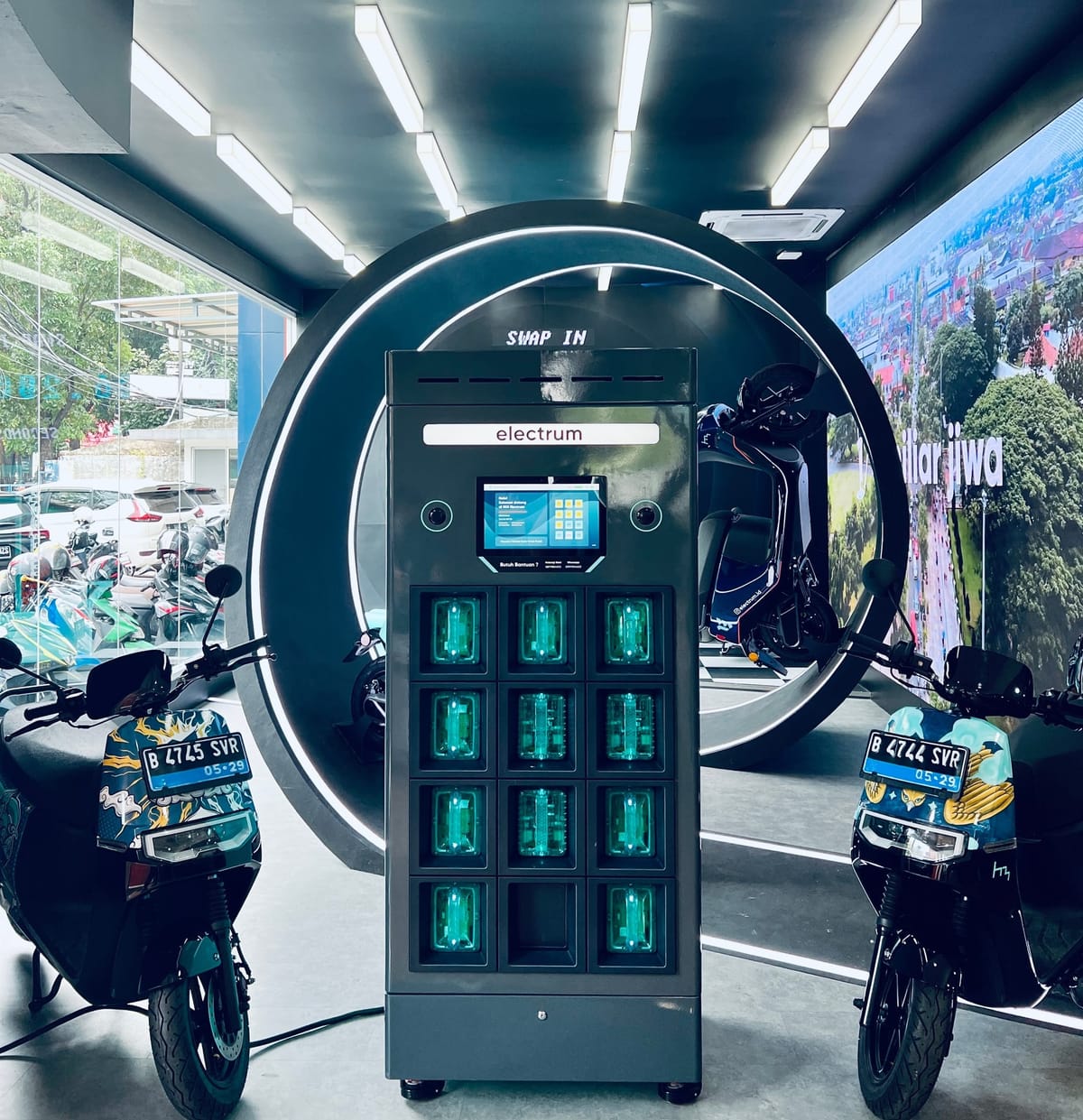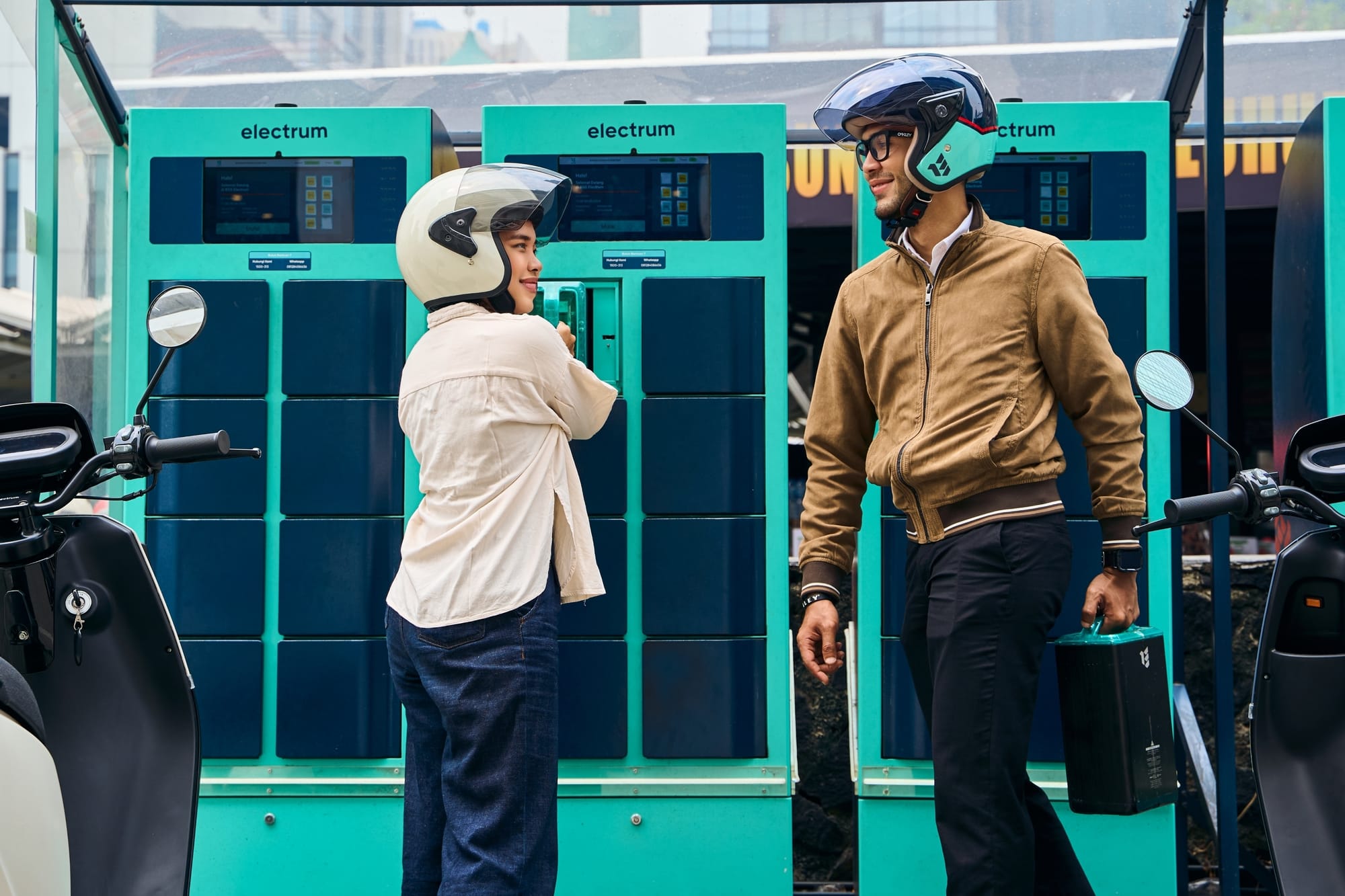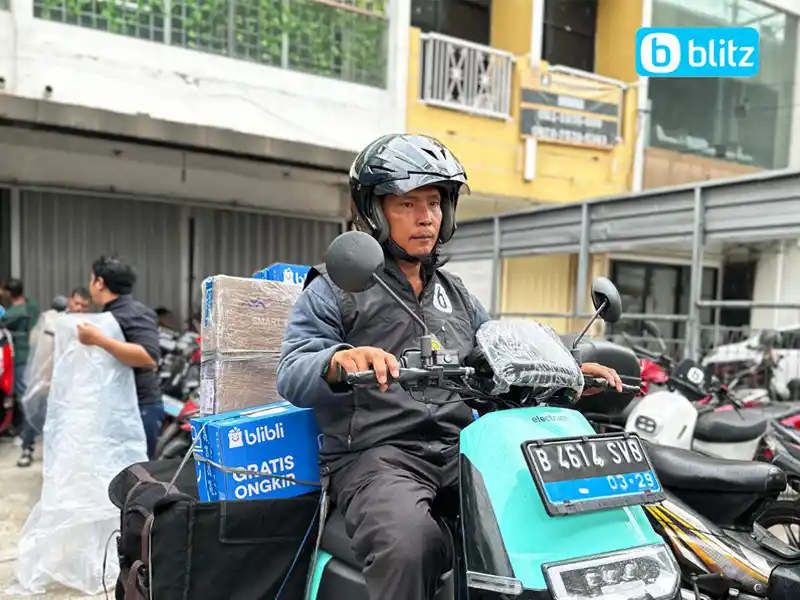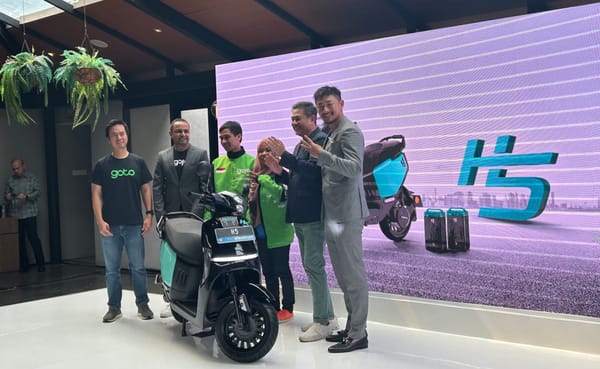Battery Swapping 101: The Key to Accelerating EV Adoption in Southeast Asia

Why I Believe Battery Swapping is the Future of EVs in Southeast Asia
With over 200 million motorcycles, Southeast Asia runs on two wheels. Actually, whether for commuting, ride-hailing, or logistics, they’re more than just vehicles—they’re the lifeline of daily mobility. But despite the global push for electrification, we’re still at the starting line when it comes to mass EV adoption.
Why? Because we haven’t been addressing the real problem. Range anxiety, inadequate charging infrastructure, and high upfront costs are holding us back. Telling someone to wait hours for their bike to charge just isn’t an option—especially when their income depends on how many trips they complete each day. That’s why I believe battery swapping isn’t just an alternative—it’s the solution.
At Electrum, we’re proving that battery swapping works. Today, we have 5,000 electric motorcycles on the road, 250 swapping stations across Jakarta, and over 15,000 battery swaps happening daily. And we’re only getting started.
Breaking Down the Barriers: Why Swapping Wins
1. No More Range Anxiety
Every EV conversation starts with one concern: “What if I run out of power?”
It’s a fair question. Our electric motorcycles run on 1.8 kWh batteries, giving a 65 km range per full charge. But many of our users—especially gig workers—ride over 100 km a day. If charging were their only option, they’d spend hours off the road, losing money with every minute that passes.
That’s why we designed our battery swapping network to be within 2 to 5 km of any rider in Jakarta. Instead of waiting hours, they swap a depleted battery for a fully charged one in just 30 seconds. The result? Zero downtime. More rides. More earnings. More trust in EVs.
2. Charging Infrastructure? Not the Real Problem
People assume the biggest hurdle to EV adoption is the lack of charging stations. But the reality is, traditional charging infrastructure doesn’t scale well in cities like Jakarta.
- Grid limitations: Widespread home charging requires a massive upgrade to our electrical grid.
- Space constraints: There’s no room for large charging hubs in an already congested city.
- Long waits: Even fast charging takes 30 minutes—way too long for commercial riders who need to be on the move.
Battery swapping bypasses these issues. No need for riders to set up home charging, no waiting in line for a plug. Just swap and go. A year ago, we had fewer than 20 swap stations. By using real-time data to map out where our users ride the most, we scaled to 100 stations. Now, we’re at 250—and we’re expanding to Bekasi and Depok in Q1 2025.
3. Lowering Upfront Costs Through Battery Rental and Subscription
One of the most significant barriers to EV adoption is the high upfront cost of purchasing an expensive battery. Traditional models often require riders to invest heavily in battery ownership, making the transition financially daunting, especially for gig workers and small fleet operators.
Electrum’s innovative business model replaces battery ownership with a rental and subscription approach. Instead of making a large capital investment in a battery, users simply pay based on the energy consumed (per kWh)—a model that offers maximum flexibility and drastically lowers the initial cost barrier.
This approach not only makes EV motorcycles more affordable but also improves the overall value proposition by:
• Reducing Capital Expenditure: Users avoid the heavy upfront costs associated with battery purchases.
• Enhancing Flexibility: Pay-as-you-go energy consumption means riders only pay for what they use.
• Boosting Adoption: Lower costs and improved affordability make EV solutions accessible to a broader range of users, particularly in high-use cases like ride-hailing and logistics.
By transitioning to a battery rental and subscription model, Electrum is making electric mobility an economically viable option for everyone—from individual riders to large fleets.
The Business Case: Why Fleets and Gig Workers Are Making the Switch
I spend a lot of time talking to the people who use our motorcycles—drivers, couriers, fleet operators. And what I hear over and over again is that making the switch to EVs isn’t about being trendy or going green. It’s about survival. It’s about making more money while cutting down on unnecessary costs.
I’ve met drivers who were skeptical at first. “Will I really save money?” “Will it slow me down?” Then, after a few weeks of swapping batteries instead of stopping for fuel, they see the difference in their wallets. They’re earning 25% more than their peers on ICE motorcycles. Why?
✅ More uptime → No waiting around, more completed trips
✅ Lower costs → No fuel, no expensive maintenance, just simple efficiency
✅ Better rides → Lighter, smoother, and less tiring for long shifts
One rider told me, “Jack, I never thought I’d prefer an electric bike, but now I can’t go back.” That’s the kind of impact that excites me.
For fleet operators, the numbers scale even further. When your entire business depends on keeping vehicles moving, the benefits of swapping aren’t just nice to have—they’re game-changing.
What Sets Electrum Apart
Let’s be real—Electrum isn’t the only player in Indonesia’s battery-swapping space. But we stand out because we deeply understand what our users need, and we refuse to compromise on three key things:
1️⃣ Best-in-Class Battery Technology I’ve held these batteries in my hands. They’re compact, lightweight, and incredibly efficient. We’re obsessed with making sure they deliver 99.99% uptime—because I know that even a single failure can mean lost income for our riders.
2️⃣ Swapping That Actually Works I’ve been in the field during rush hour, watching as our stations get flooded with riders swapping their batteries. Our mission is simple: No rider should ever leave empty-handed, even on the busiest days. That’s why we constantly optimize our stations for peak performance. If we ever fall short, we fix it fast.
3️⃣ We Serve the People Who Need EVs the Most Our focus isn’t on weekend riders or luxury EV enthusiasts. It’s on the people who move Jakarta—gig workers, delivery fleets, and logistics companies. These are the users who get the most out of battery swapping, and that’s why our network is designed specifically for them.
The Long Game: What It Takes to Build an EV Ecosystem
I won’t sugarcoat it—EV adoption in Indonesia is still in its early stages. Fuel subsidies make gasoline artificially cheap, which slows down the urgency for change. But we see the bigger picture.
Governments are already cutting back on these subsidies, and when they do, the economic case for EVs will become even clearer. The transition won’t happen overnight. It takes patience, investment, and a commitment to building the right infrastructure.
Battery swapping is the fastest way to make EV adoption a reality in Southeast Asia. It removes the barriers that have held us back for too long—making EVs accessible, affordable, and, most importantly, practical for the people who rely on two-wheelers every day.
At Electrum, we’re not just building EVs. We’re building a future where swapping is second nature—where running out of charge is no longer a worry, and where making the switch to electric is a no-brainer.
The future isn’t just electric. It’s instant.
🚀 Are you ready to swap and ride?



